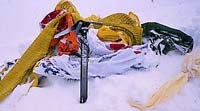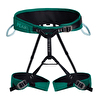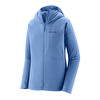My Everest - Simone Moro climbs the highest mountain in the world

 1 / 4
1 / 4 archivio Simone Moro
archivio Simone Moro
It was 9.00 am, 24 May and a -40ºC Himalayan storm was blowing right
into me.
I was on top of my Everest, this time it was the real one though. The one
which, at almost 9000m, imposingly dominates our planet. And all of a
sudden my ambitions seemed so distant and insignificant while my fears so
rational and strong.
Because, contrary to common belief, up there you don't challenge anything
or anyone, you don’t command or dominate - you are dominated. You are at
nature's mercy and, if anything at all, simply accepted. Nothing more.
That is why, for the third time, I was trying to reach the summit but, as
in life's other Everests, I had been forced to turn back. Even though I
had "fought" against all adversities and with all possible means.
Climbing the highest mountain on Earth has always been one of every
mountaineer's most sought after goals. The same holds true for me, for in
my 20 year courtship with the mountains I've always dreamt of reaching the
highest point on Earth. Bearing in mind though that this is neither a
challenge nor a conquest, otherwise you risk dying of your own ambitions.
They render short-sighted in the face of the obvious difficulties posed by
such a demanding climb.
What induces a mountaineer to set off towards Everest are the desire to
experiment, the thirst for simple, strong emotions, the great love for
life and the will to satisfy our desires.
We are considered irresponsible madmen constantly in search of trouble who
have lost the meaning of life. This is probably the duty, but if it is the
price to pay, then I'd pay it twice over, because the joy I get is simply
too great. Pure, spontaneous joy, nothing else…
"Everyone has his or her own personal Everest. They probably know it,
but who knows how many really reach the summit of their dreams."
This philosophical approach is obviously backed up by plenty of realism.
Hours and hours of training which, as the years go by, are increasingly
done outside instead of indoors. Work-outs with weights, running for
kilometers on end on every terrain and slope imaginable, hundreds of
cycling sessions and countless days spent climbing over rock, snow and ice
to hone my techniques and capabilities and to awaken my instinct.
Even if there are many different personal motivational factors, my
alpinism is similar to that of so many others, carried out by a boy who
was just like all the rest, who then decided to interpret the activity not
as the end all of life but as a means to discover and love life.
Climbing mountains is a way to discover different cultures, peoples and
the problems of this world. And also a means to discover one's personal
physical and psychological limits, remaining aware that these can be
overcome with determination, motivation and training.
Because, in the end, the stimuli that motivate people to evolve in
emotional, social and working spheres are all the same. So if, therefore,
individuals are motivated by the same stimuli, even in such widely
differing environments, isn't it perhaps time to stop defining
mountaineers as madmen?
TECHNICAL DETAILS
The technical details of my latest Everest adventure
The objective was to climb the Everest-Lhotse Traverse, or rather, to
climb the highest and fourth highest mountains on earth (8850m and 8516m
respectively). The deal was: no oxygen or sherpas, and to climb
lightweight.
There were two of us: I was accompanied by my partner, friend and fellow
mountaineer Denis Urubko from Kazakistan, with whom I climbed in Pamir and
Thien Shan last year.
The novelty of our project was that we wanted to climb two 8000m giants in
quick succession. They are linked together by a col, the South Col,
situated at 8000m and this should have been our resting point between one
summit and the next. We wanted to be there, without oxygen and completely
self-sufficient.
The chronological series of events was characterised by a long series of
misfortunes and misadventures. Bad weather, avalanches, misfortune and
even robbery! We reached the summit of Everest, a much suffered and teeth
gritting achievement. The traverse, on the other hand, is still there and
waits to be climbed. We didn't do it because of all our misadventures and
the almost impossible snow conditions.
But I would like to contemplate that robbery. Having something stolen from
Everest Base Camp should be the last thing one needs to worry about,
really…
While Denis Urubko and I were at 7300m searching in vain for our
avalanched tent and almost US$ 5000 worth of gear, someone had the bright
idea of "visiting" my tent at Base Camp and taking my sleeping bag, a
rucksack, a digital camera, a battery for my computer and then kicking my
satellite telephone!
I remember that, after having fought against the storm and bad luck, we
returned to Base Camp exhausted only to make the by no means fantastic
discovery that I didn't even have a sleeping bag to sleep in. I didn't ask
who, how, or why, I simply borrowed what I no longer had. I didn't even
get angry, because I find this difficult and I didn't want to ruin the
calm which, at least in the Himalayas, should reign supreme.
This incorrectness is inevitably generated by the increasing number of
people who have only ever seen the mountains on postcards! People who,
therefore, have no interior values and personal feelings of being at one
with nature. The same values and feelings which should be present in human
relationships.
And it is because of this that I remain unsurprised or scandalised. The
ease with which one can travel nowadays has inevitably affected also Nepal
or Tibet. What happenend to me at Everest Base Camp is the fruit of our
exported education.



 Copia link
Copia link


























